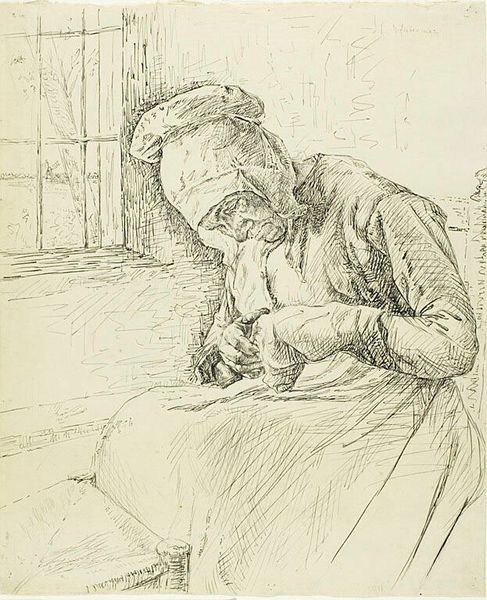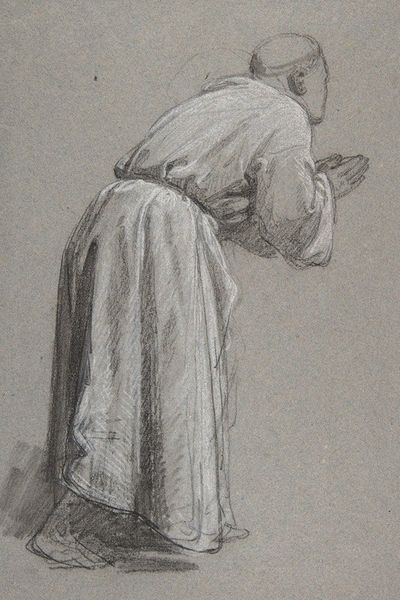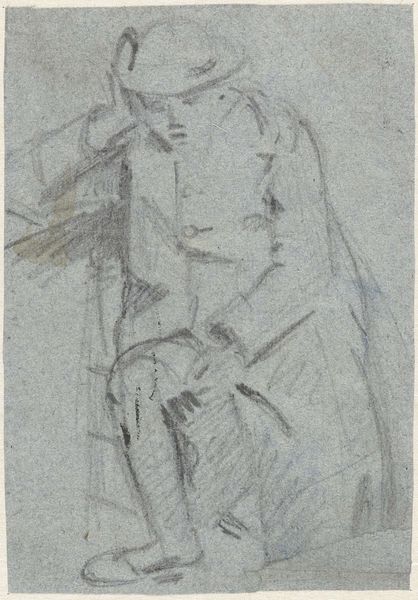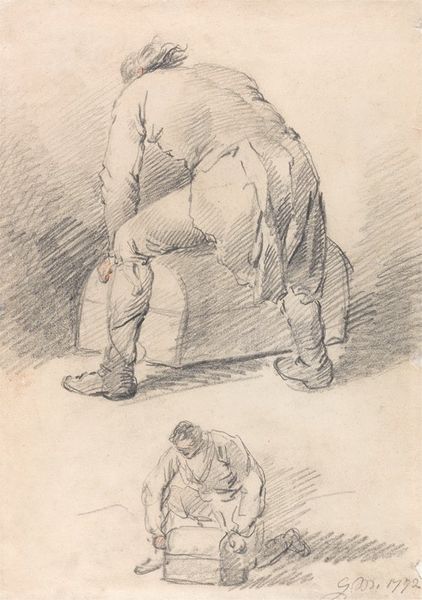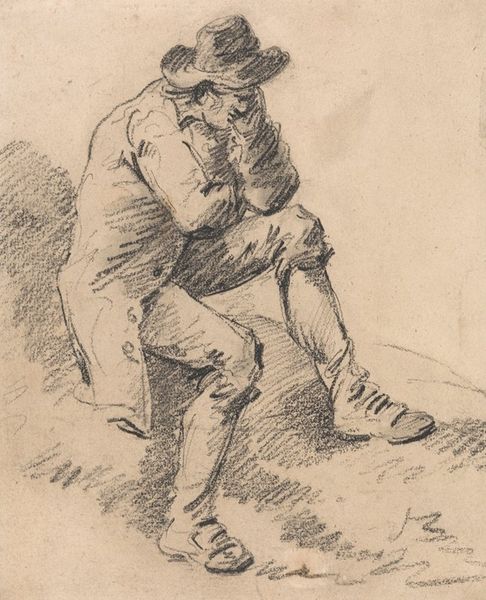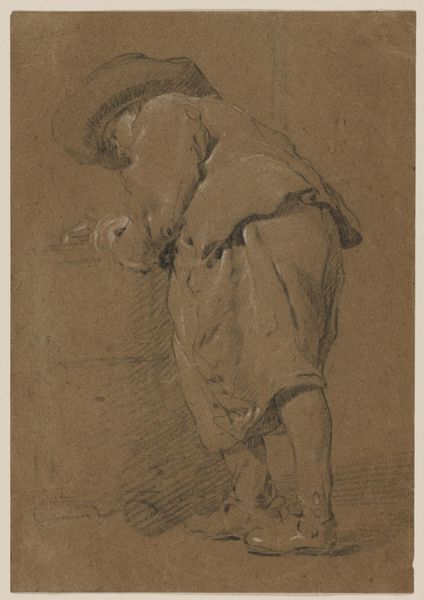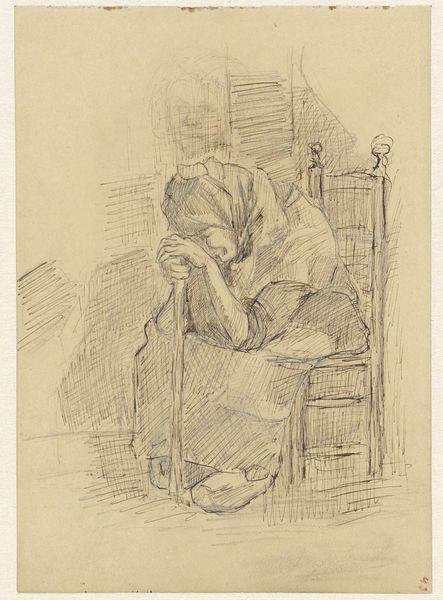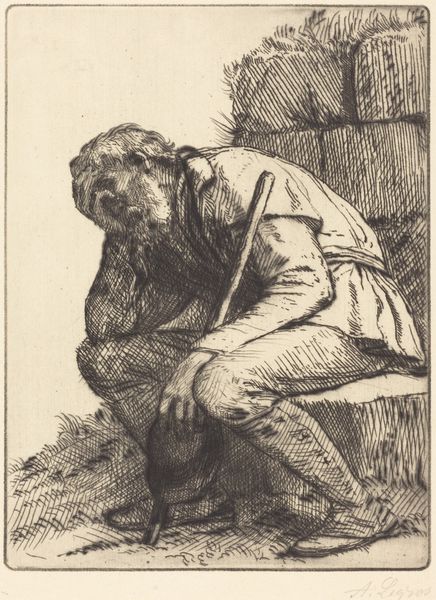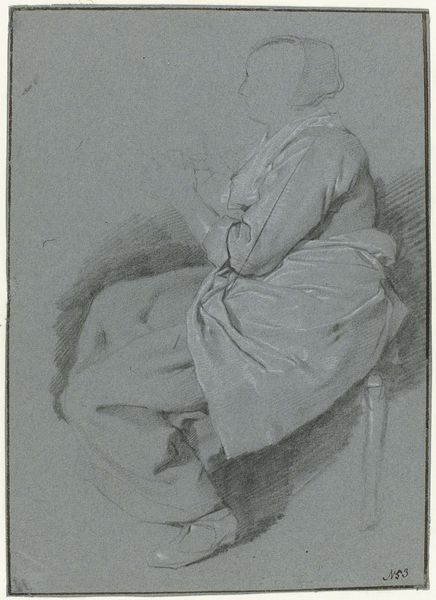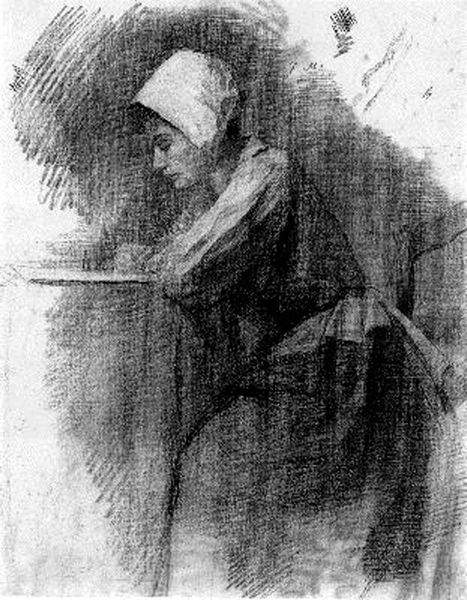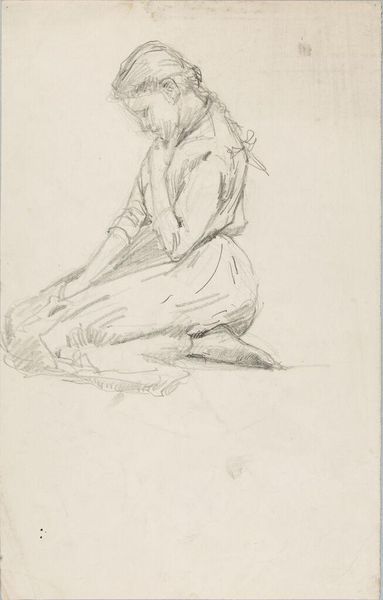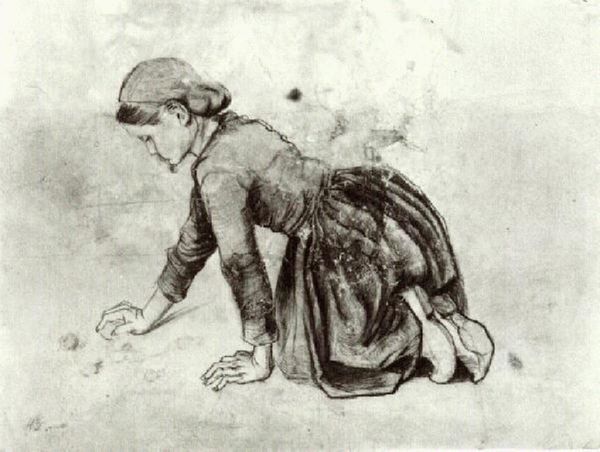
#
amateur sketch
#
light pencil work
#
pencil sketch
#
incomplete sketchy
#
personal sketchbook
#
pencil drawing
#
detailed observational sketch
#
portrait drawing
#
pencil work
#
initial sketch
Dimensions: height 303 mm, width 179 mm
Copyright: Rijks Museum: Open Domain
Editor: This is "Woman on Her Knees, Cleaning," a pencil drawing by August Allebé, likely created between 1848 and 1907. I'm struck by how much it captures a sense of everyday labor, yet there's something almost melancholic about it. What do you see in this piece? Curator: It's a seemingly simple sketch, but laden with societal context. The pose immediately draws attention to the physical demands placed upon women, particularly working-class women, during this period. Allebé renders visible the often-unseen labor that upheld the domestic sphere. We should consider, whose stories are privileged, whose are not? Editor: I hadn't thought of it that way, focusing on the act of labor itself. Is it typical for art from this time to show these subjects so frankly? Curator: Precisely, we can look at the historical power structures it suggests. Domestic work was – and often still is – devalued and feminized. What does it mean to elevate this type of labor through art? Does it critique the existing social hierarchy? Does it challenge us to see worth in labor that's frequently dismissed? Editor: So, even a seemingly straightforward drawing can engage with feminist issues and social justice? Curator: Absolutely. Think about how representations like this impact our understanding of gender, class, and value. Consider who gets to make art and what subjects are deemed worthy. Allebé might have been trying to bring visibility to this dynamic through her work. Is the drawing style reinforcing the feeling of oppression or exploitation? Editor: Now I see more than just a woman cleaning. It's a statement about the dignity of labor and the social realities of the time. Curator: Exactly. This seemingly quiet piece sparks conversations about inequality, representation, and the ongoing need to value all forms of work.
Comments
No comments
Be the first to comment and join the conversation on the ultimate creative platform.
